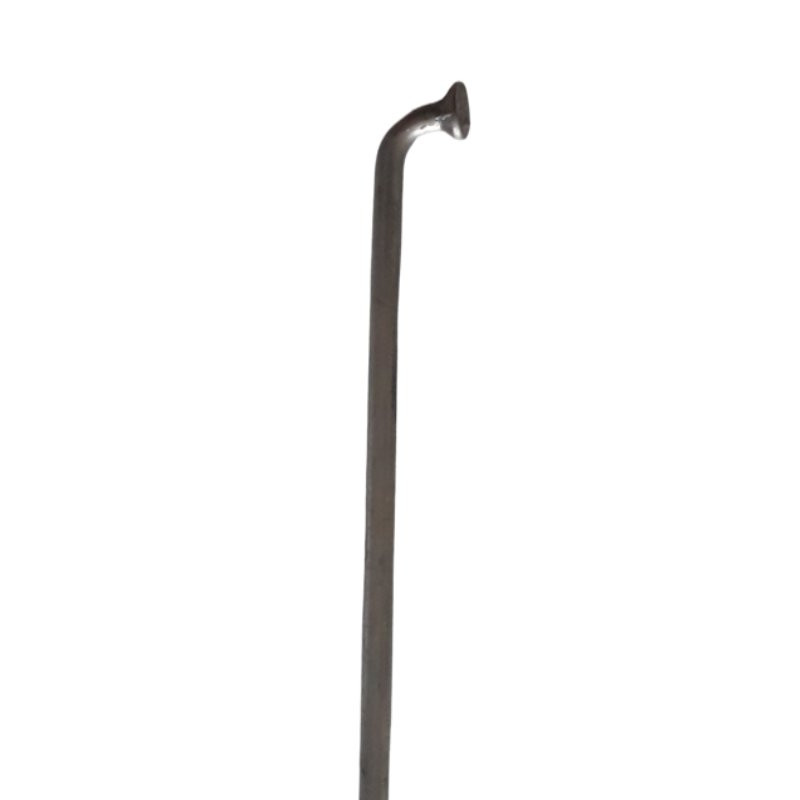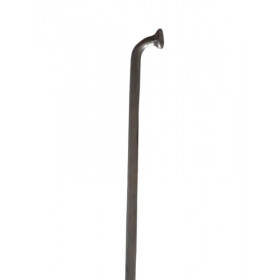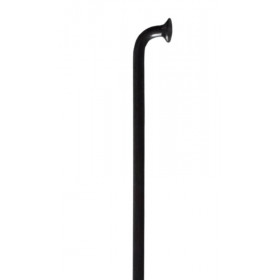 zoom_in
zoom_in
Bicycle wheel spoke
- 20 Items
- New
€0.05 VAT included
Bicycle wheel spoke: a small part that makes a big difference
When we talk about a bicycle wheel, we often think of the rim, the tire, or maybe the hub. But one key component that ensures strength, balance, and performance often goes unnoticed: the bicycle wheel spoke. It may seem minor, but this slender piece of metal plays a vital role in how your bike handles and performs.
Whether you're replacing a broken spoke, building a custom wheelset, or optimizing your setup, understanding spokes is essential.
What is a bicycle wheel spoke ?
A spoke is a thin rod that connects the hub (the center of the wheel) to the rim. Its job is to support the wheel's structure by distributing tension evenly. This tension allows the wheel to maintain its shape under the rider's weight, during pedaling forces, or when hitting bumps and obstacles.
Most bicycle wheels are made up of 24 to 36 spokes, arranged in specific lacing patterns: radial, 2-cross, 3-cross, or asymmetrical for rear wheels.
Key features of a bicycle wheel spoke
1. Material
-
Stainless steel: the most common. Durable, strong, and corrosion-resistant.
-
Aluminum: lightweight but less robust — rarely used for performance wheels.
-
Titanium or carbon: high-end options found on race wheels, combining strength with lightness.
2. Shape
-
Round spokes: standard and easy to maintain.
-
Bladed or aero spokes: reduce air resistance, ideal for road racing.
-
Butted spokes: variable thickness, offering strength where needed and weight savings elsewhere.
3. Length
The spoke length depends on the rim diameter, hub dimensions, and lacing pattern. Accurate measurement or calculation is critical for proper wheel building.
4. Tension
Proper spoke tension keeps the wheel true, stiff, and durable. Too loose? The wheel may flex or become untrue. Too tight? You risk breaking the spoke or damaging the rim.
Different spokes for different riding styles
-
Road bikes: fewer, thinner, often aero-shaped spokes for lightness and speed.
-
MTB / Enduro / Downhill: thicker spokes for impact resistance and stability on rough terrain.
-
Gravel bikes: balance of strength and lightness — often double-butted spokes.
-
E-bikes: reinforced spokes due to the motor’s torque and added weight.
-
Fixies / City bikes: sometimes colorful or custom-styled for a unique look.
When should you replace a bicycle wheel spoke ?
A broken spoke should be replaced immediately. Riding with one missing affects tension balance, which can cause the wheel to go out of true — or lead to further damage.
You might also consider a complete spoke replacement (or full wheel rebuild) when:
-
Upgrading to lighter or stronger spokes,
-
Changing your riding discipline (e.g., moving from road to gravel),
-
Customizing the look of your wheels.
How to choose the right spokes
Before ordering bicycle wheel spokes, you'll need to know:
-
The rim size (700C, 29", 27.5", etc.),
-
Your hub model and dimensions,
-
The lacing pattern (radial, 2-cross, 3-cross, etc.),
-
The exact spoke length required (use a spoke calculator or measuring tool),
-
The material and shape suited to your riding style.
In summary
Small but essential, the bicycle wheel spoke is a critical component for your bike’s performance, durability, and comfort. Whether you're riding on the road, hitting the trails, or commuting daily, the right spoke — properly tensioned and matched to your wheel — can make all the difference.
So, ready to let your wheels shine?




